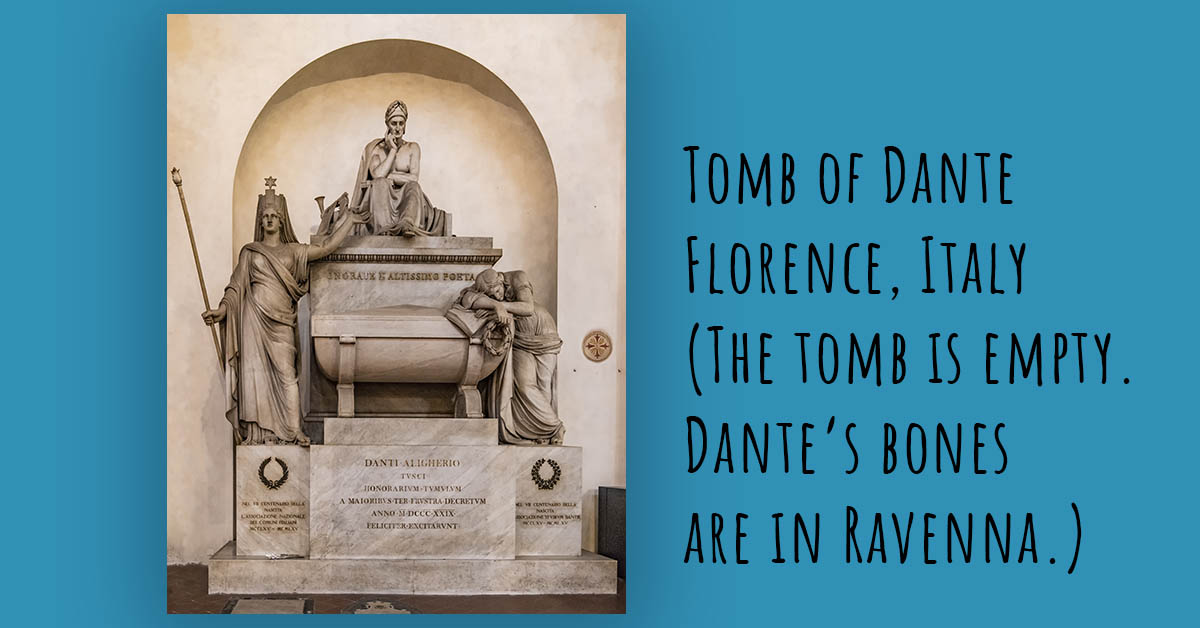According to tradition, Dante died on the Feast of the Exaltation of the Cross in 1321. His body was carried by Ravenna’s most illustrious citizens “to the dwelling place of the Friars Minor.” The Basilica was officially named in honor of St. Peter, but was called even then San Francesco. Today it is called “Dante’s Church.” The funeral was celebrated there, and the body buried in the cemetery near the northern side of the Church.
Almost immediately, a struggle began between Ravenna and Florence over Dante’s remains – the citizens of Florence wanted to claim his body and bury him there. The Pope himself sided with the Florentines, and Michelangelo was among those who began to construct a new tomb for the dead poet.
By the time the orders to move the body were ready to be enforced, it was too late. The Franciscans living in the Basilica’s friary had broken open the tomb, which backed into their cloister, and removed Dante’s remains.
It is unknown how long the bones were kept in the friary. But they were re-certified as genuine in 1677, and hidden again in 1810 when Napoleonic law decreed that all religious Orders were to be suppressed and their goods confiscated.
You can read how the remains were hidden again and preserved by the Friars by visiting:



